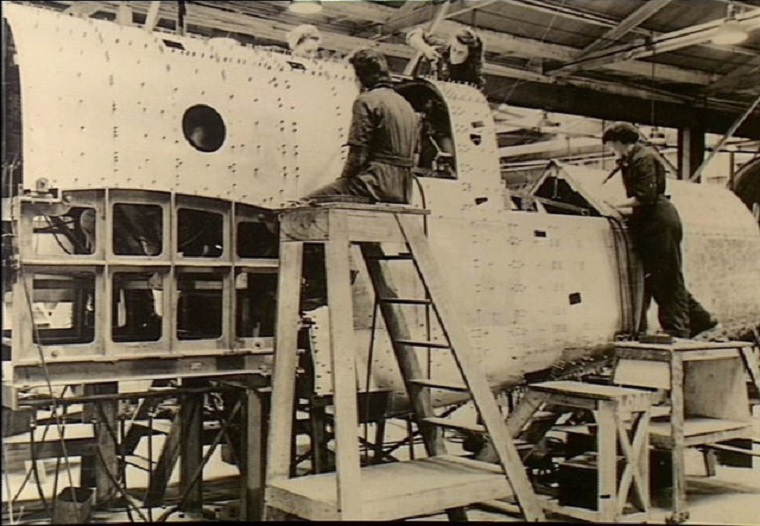During World War II, with the male workforce considerably depleted and ‘manpower’ critical to maintain wartime production, women took on a significant role. Wartime created opportunities not only for the development of local engineering prowess, but also provided new employment opportunities for women. Women were trained at the motor car and aircraft factories at Fishermans Bend, where they worked alongside men in the assembly of fighter planes. The criteria for women’s employment included women who were sole breadwinners; or, women whose husbands were away on war service; or, women who sought skilled training.
The Commonwealth Airport Corporation took on its first female trainees in 1941 and soon had a large influx of women workers, whom the Argus newspaper praised for ‘doing work that would have been regarded as beyond their capacity during peacetime’. Women workers in wartime also won several wage claims.
Joyce Breedin, who had previously worked as a laundress, was employed at General Motors Holden, Fishermans Bend. Posing for a photograph in 1942, she was described as ‘now an expert in setting brads ready for applying the “skin” (body) to the wing frame of a Wackett trainer.’

Women workers at the Commonwealth Aircraft Factory during World War II (source: Australian War Memorial, ref. 045372)
Wartime also saw a large number of women employed at Fishermans Bend by the Australian Women’s Army Services, doing office work and working in the salvage depot, where they laundered and sorted military uniforms and equipment.
During the postwar period, some women retained their positions at the engineering factories at Fishermans Bend but most were not kept on. The male workforce was restored, and boosted with the large influx of postwar immigrants. By 1947, the overall proportion of women in the workforce in Australia had returned to its 1939 rate of just over 23 per cent.
After the war, female migrants from European countries were employed in factories in the area from the 1960s and onwards. So too were a large number of Vietnamese immigrants, including refugees, who had fled to Australia in the 1970s and early 1980s. Vietnamese migrant Mai Ho recalled her experience in getting work at the GMH factory: ‘She was initially rejected, but persuaded the personnel officer to give her an opportunity. Two and half months after arriving in Australia, Mai became the first female quality control inspector at the Fisherman’s Bend Plant.’
Page last updated: 08/11/19